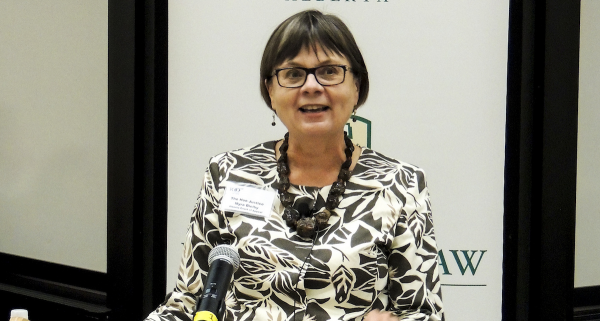Photo: Cardston-Taber-Warner MLA MLA Grant Hunter and UCP leader Jason Kenney. (source: Facebook)
While announcing his plans to run for re-election in the new Taber-Warner district, United Conservative Party MLA Grant Hunter is reported to have compared the New Democratic Party’s 2015 election win to the 2004 Tsunami that ravaged southeast Asia and is estimated to have killed upwards of 280,000 people.
Hunter offered an apology to anyone was offended by his comments, but this is just the sort of ridiculous anti-NDP hyperbole that we have become accustomed to hearing from some Wildrose/UCP MLAs over the past three years.
But when talking about his decision to run in the new Taber-Warner district, rather than challenging his caucus colleague Dave Schneider for the UCP nomination in the new Cardston-Siksika district, he made another statement that caught my attention.
“…the NDP have put us in a bad position in this southern part here, in that when the boundaries were redrawn, they split Cardston-Taber-Warner into two different ridings.”
The Cardston-Taber-Warner district Hunter currently represents will see significant changes when the next election is called. While he may have legitimate concerns about the redistribution of the electoral boundaries in southern Alberta, it is misleading to blame the NDP for putting him “…in a bad position…”
The new district boundaries for the 2019 election were drawn by a commission composed of an independent chairperson (Justice Myra Bielby), two NDP Caucus appointees (Bruce McLeod of Acme and Jean Munn of Calgary) and two Wildrose Caucus appointees (Laurie Livingstone of Calgary and Gwen Day of Carstairs). The commission was appointed in October 2016 and held public hearings and received hundreds of submissions from Albertans throughout 2017.
Of the Wildrose appointees, Livingstone supported the final report recommending the new electoral map, including the changes to Hunter’s district, and Day submitted a minority report opposing changes to rural district boundaries.
The bi-partisan commission submitted recommendations for a new electoral maps to the Legislative Assembly for debate and it were voted into law by 40 NDP MLAs and Alberta Party MLA Greg Clark last December.
The process used to redraw Alberta’s electoral boundaries certainly has its flaws (I will write more about this soon), but with Hunter’s own party’s handpicked appointees deeply involved in the process it is misleading for him to blame the party in power for changes he might not like.
Note: 25 MLAs voted against the new electoral map, including two NDP MLAs, Colin Piquette and Eric Rosendahl.


